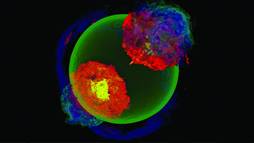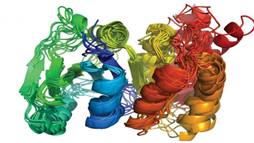Essential Ingredients for Discovery and Innovation
What's the recipe for accelerating scientific discovery and innovation?
 Image courtesy of Flash Center for Computational Science, University of Chicago
Image courtesy of Flash Center for Computational Science, University of Chicago
Computing provides an unparalleled ability to model and simulate Type la (thermonuclear-powered) supernovas.
Start by taking a couple of world-class supercomputers, including Titan, which just debuted as the world's most powerful machine for open science. Provide serious processing hours to a few score of brilliant people working on the toughest problems they can find. Plug the programs in and let them cook. When they're done, the result is simulations that astonish the mind . . . and more importantly, solutions that increase America's competitiveness and may lead to significant scientific advances.
In a sense, that's the recipe for success of the Office of Science's INCITE (Innovative and Novel Computational Impact on Theory and Experiment) program. Since the program made its first awards in 2004, it has provided more than 10 billion processing hours on the Department of Energy's fastest supercomputers to scientists across the globe taking on the field's most difficult challenges.
That's true for the recently-announced winners of the 2013 INCITE Awards. Some 4.7 billion processing hours were awarded to 61 science and engineering projects with a high potential to accelerate innovation and discovery on two of the Department of Energy's newest and most powerful supercomputers, Argonne National Lab's Mira, a 10-petaflop IBM Blue Gene/Q system, and Oak Ridge Lab's Titan, a new 20-petaflop Cray XK7 hybrid system which is approximately ten times more powerful than Jaguar, its predecessor. Both machines are capable of performing quadrillions – that's a thousand trillion – operations each second. In particular Titan, which just debuted, is approximately ten times more powerful than Jaguar, its predecessor at Oak Ridge.
That new processing power will allow scientists to see nature in greater gritty detail than ever before. The simulations will speed insights and perhaps suggest new innovations. Projects planned for 2013 include:
- Studies of exploding stars and subatomic particles and seismic hazards
- Analyses of materials used in nuclear reactors and advanced energy technologies
- Calculations of how proteins – essential cellular machiens – take their form (and therefore function)
- Simulations of atmospheric churn and engine burn; of the great effects that small particles can have on the atmosphere and even the climate
The 2013 INCITE awards went to projects all across the scientific spectrum – for the full list, go to: http://www.doeleadershipcomputing.org/awards/2013INCITEFactSheets.pdf. And the awardees came from researchers all across the scientific community – academia, industry and government. The criteria for each proposal were the same, scientific or technical merit coupled with computational readiness. And the competition was stiff: Proposal submissions were up by 20 percent compared to those over the past three years, and 13 winning projects were headed by principal investigators who had never before submitted an INCITE proposal.
 Image courtesy of Oliver Lange
Image courtesy of Oliver Lange
Supercomputers have only recently paved the way for tiny proteins like this ALG3 to be rendered in enough detail to understand their dynamics.
With the full computational power of Titan and Mira still coming online, and with even faster machines on the hoped-for horizon, it seems almost certain that the INCITE awards will stay competitive for years to come. Here's hoping so. Through each simulation and each successful project, researchers are developing a better understanding of our world and how we can improve our place in it, improving our prosperity and strengthening our competitiveness.
That's the Office of Science and it's INCITE program at work: Accelerating discovery and innovation, and keeping America's competitiveness cooking.
The Department's Office of Science is the single largest supporter of basic research in the physical sciences in the United States and is working to address some of the most pressing challenges of our time. For more information please visit http://science.energy.gov/about. For more information about INCITE, please go to: http://www.doeleadershipcomputing.org/.
Charles Rousseaux is a Senior Writer in the Office of Science.

